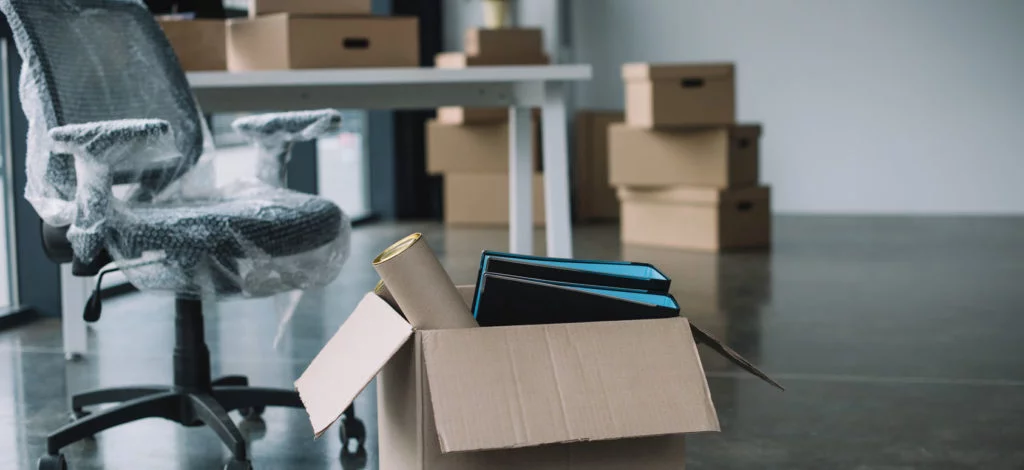
Moving an office is like an enormous game of Tetris – making sure everything fits in its rightful place and that everyone stays on the same page. In this blog post, you’ll get essential tips for a smooth office relocation so you can keep your business running and your stress levels down!
Table of Contents
1. Set a timeline

Source: finsmes.com
Establishing a timeline of desired milestones and tasks will help you stay on track through the entire process. Talk to your team, contractors, and vendors to create an achievable timeline.
Begin by setting a launch date for the relocation — the day by which all staff and equipment should be moved into the new space. From here, consider identifying key dates for specific activities related to the relocation:
- When you will have architects and contractors hired
- A date for when plans should be finalized
- When furniture ordering should begin
- Packing up materials in preparation for move day
- A date to set up communication systems, such as phones and computers
- And any other necessary steps prior to launch day
Setting dates in advance allows everyone involved in the move time to bring their expertise to bear on each stage. Plus, it’s an easy way to check off completed tasks and identify any potential hiccups ahead of time. With a roadmap in place, you’re ready to move forward with your office relocation!
2. Identify key personnel to be involved
Leaders, project managers, and stakeholders should be identified early in the process to ensure deadlines are met and objectives are achieved. As part of the identification process, ask yourself who needs to be informed about the move, and who will provide support and make decisions along the way.
3. Create a budget
To ensure that the move is completed successfully, it is important to set a realistic budget for the entire process. The budget should include necessary items such as furniture and equipment for the new office space, as well as other necessary costs such as packing supplies, moving truck rental, professional movers (if needed), storage cost (for long-distance moves), and insurance for items being moved.
It is a good idea to list every possible expense and then factor in additional funds to account for contingencies or unexpected fees. Sticking to an established budget can help relieve the stress associated with moving and provide peace of mind during the process
4. Establish a floor plan

Source: forbes.com
This will ensure that the move takes place with minimal disruption to your staff and customers. Before you choose a new office space, consider whether it meets the needs of both existing and new employees. Think about how you will allocate space for different types of activities such as individual and group work, as well as storage and logistics areas.
Creating an effective floor plan helps in organizing furniture layouts, designing efficient traffic flow throughout the office space, and maximizing the usability of each room or area. When designing your floor plan, you should consider ways to increase productivity by minimizing distractions in individual and collaborative workspaces and creating communal spaces with adjustable furniture that can easily be reconfigured for various purposes.
5. Research storage options
Having the proper type of storage can help minimize the complexity of your company’s office move.
Short-term options, such as a mobile storage unit, can be delivered to your office so you can easily sort, pack and store items until you’re ready to move them. Transportation services may also be available, allowing you to empty out your existing space at your own pace without worrying about what order items will run in or how quickly employees need to wrap and load boxes for removal.
If your new office is not quite ready yet or you have an excessive amount of inventory or bulky items that need short-term storage during the move, consider renting a warehouse space in the interim. Make sure you factor any additional costs associated with storing extra furniture into your moving budget.
6. Hire a moving company
Professional movers can provide safe and efficient transportation of office furniture, equipment, and other items while making sure every item is accounted for and arrives at the new destination intact.
In order to hire a moving company that best suits your needs, you will want to do some research. Consider budget, reputation, customer reviews, insurance coverage, and other services offered by different companies in order to choose the one most suited for your office removals. It may also be an option to compare quotes from registered commercial movers so that your business can get the best possible rate.
7. Transfer existing phone systems

Source: midascommunications.com
Make sure you have all the necessary equipment: Depending on the size and type of phone system you are using, you may need various cords and adapters. Make sure you have an inventory list of all the items needed to complete the transfer so that everything is ready in advance.
Your phones require external power and will require enough power outlets for installation. Ensure that all phones connected to the same line are on the same circuit, or else their connection will be interrupted during relocation.
If needed, invest in modern technologies such as VoIP systems or hosted PBX solutions for increased efficiency, scalability, and cost savings in the long run.
8. Set up new internet and Wi-Fi
Secure internet and Wi-Fi connection are essential for a business to run smoothly. Before your move, it’s important to review your current technology needs and plan ahead to ensure you have the appropriate QuickStart packages and services in place for the move.
Most reliable internet service providers offer bundled office packages that include cable, telephone, and Wi-Fi services. This will ensure a smooth transition between locations with minimal downtime, so you can continue working remotely or remain in constant contact with clients. Depending on your industry, you may also need data cables, peripherals (such as printers), and dedicated lines for faxing or scanning documents.
9. Test all equipment before the move
Both computers and other electronics should be cleaned, tested, and packed securely. Failure to do so can make for an even longer relocation process when operational issues are discovered after the move.
Once the equipment has been tested, you’ll need to back up or remove any data currently stored on the devices. Storing data on external storage devices such as USBs or cloud-based software programs ensures its accessibility regardless of where it’s stored physically. To prevent data loss associated with physical damage, consider additional strategies such as double-copying information onto two separate storage sources and labeling each package individually with basic identifying information (i.e., name of the device).
10. Have a party!

Source: thebash.com
Don’t forget, moving offices is a huge milestone for your business—so take a moment to celebrate the success! Host a special event at the new office location and invite stakeholders who have helped facilitate the successful move. It’s a great way to bring people together and convey your appreciation.
Organizing an event often requires extra effort when you’re completing other work duties however, it can provide a strong way to mark this special moment for your team and business as a whole. Festivities don’t have to be elaborate—even catering simple refreshments or hosting awards for those who have gone above and beyond can create staff unity during this big transition period.
Wrapping up
We hope that these tips have been helpful as you plan your office relocation. Remember to give yourself plenty of time to plan and prepare, and don’t be afraid to ask for help from your team members or professional movers. With a little bit of planning and preparation, your office relocation can be smooth and stress-free.







